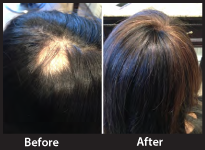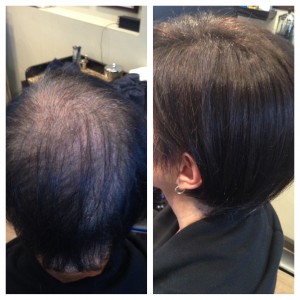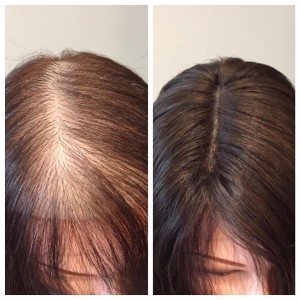 Thinning hair and/or total hair loss (or more formally known as, alopecia) can occur for many reasons. It can affect just your scalp or your entire body from conditions like trichotillomania, when someone pulls and tugs on their hair creating small patches of scalp consciously or unconsciously, which can lead to partial or total hair loss. It’s more common among teens and college students, especially when they are experiencing pressure from school or social interactions.
Thinning hair and/or total hair loss (or more formally known as, alopecia) can occur for many reasons. It can affect just your scalp or your entire body from conditions like trichotillomania, when someone pulls and tugs on their hair creating small patches of scalp consciously or unconsciously, which can lead to partial or total hair loss. It’s more common among teens and college students, especially when they are experiencing pressure from school or social interactions.
A zinc deficiency can lead to a direct result of thinning hair. It’s often associated with hypothyroidism, which is an overlooked cause of alopecia. Thyroid hormones are essential for the body to absorb zinc. It can also be found in foods like cashews, pumpkin seeds, chick peas and spinach, but sometimes it’s necessary to use supplements.
Other key factors that lead to thinning hair and/or total hair loss include heredity, hormonal changes, medical conditions, medications, or stress; any of those can lead to hair loss or the more formal name alopecia.
Today, stress levels are at an all-time high. Finding better ways to release stress can be helpful. For example, a good book, exercising, a great massage, a sport, or a hobby is a step in the right direction. Good nutrition is also an important asset for your total body.
For many of us, we don’t even realize when we are internalizing stress. As women, we can be calm, cool, and collected on the outside, but our insides can be a tangled web of emotions that ultimately surface through disease, hair loss, or depression.
Thinning hair and/or total hair loss does not discriminate, regardless of age or gender. There are many different types of alopecia. The usual suspects that can add to your risk factor are family history, age, poor nutrition, stress, or certain medical conditions such as lupus, diabetes, and cancer.
We can control some of the risks of thinning hair and/or total hair loss, but of course, there are several that we cannot. Learning the options that are available to you can provide a source of relief immediately.
For thinning hair, many times a simple clip-on hair piece is all that’s needed. There is also non-surgical bonding for areas of semi-permanent or permanent total hair loss. Wigs either synthetic or human hair are yet another option. Some women choose to just wear a scarf or trendy hat.
Thinning hair and/or total hair loss can either be temporary or permanent; therefore, it’s important to see your doctor as soon as you begin noticing a change in your normal hair, or are experiencing unusually high levels of stress.
Feel free to book a complimentary consultation with us to learn the options available for you or a loved one. Call 203 987 5948 ext 1 or visit www.althairsolutions.com to learn more.





